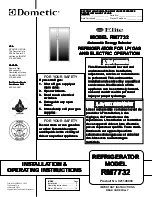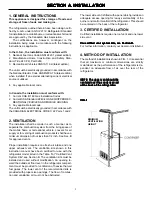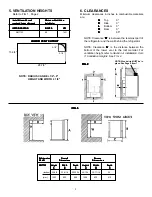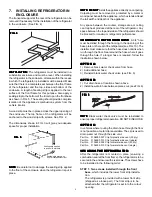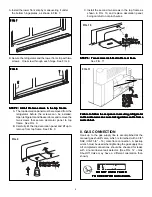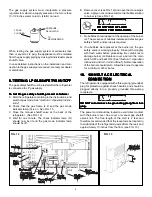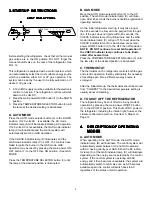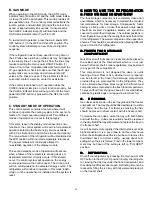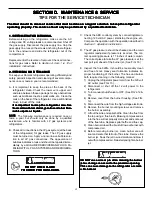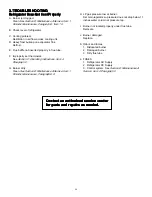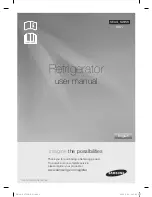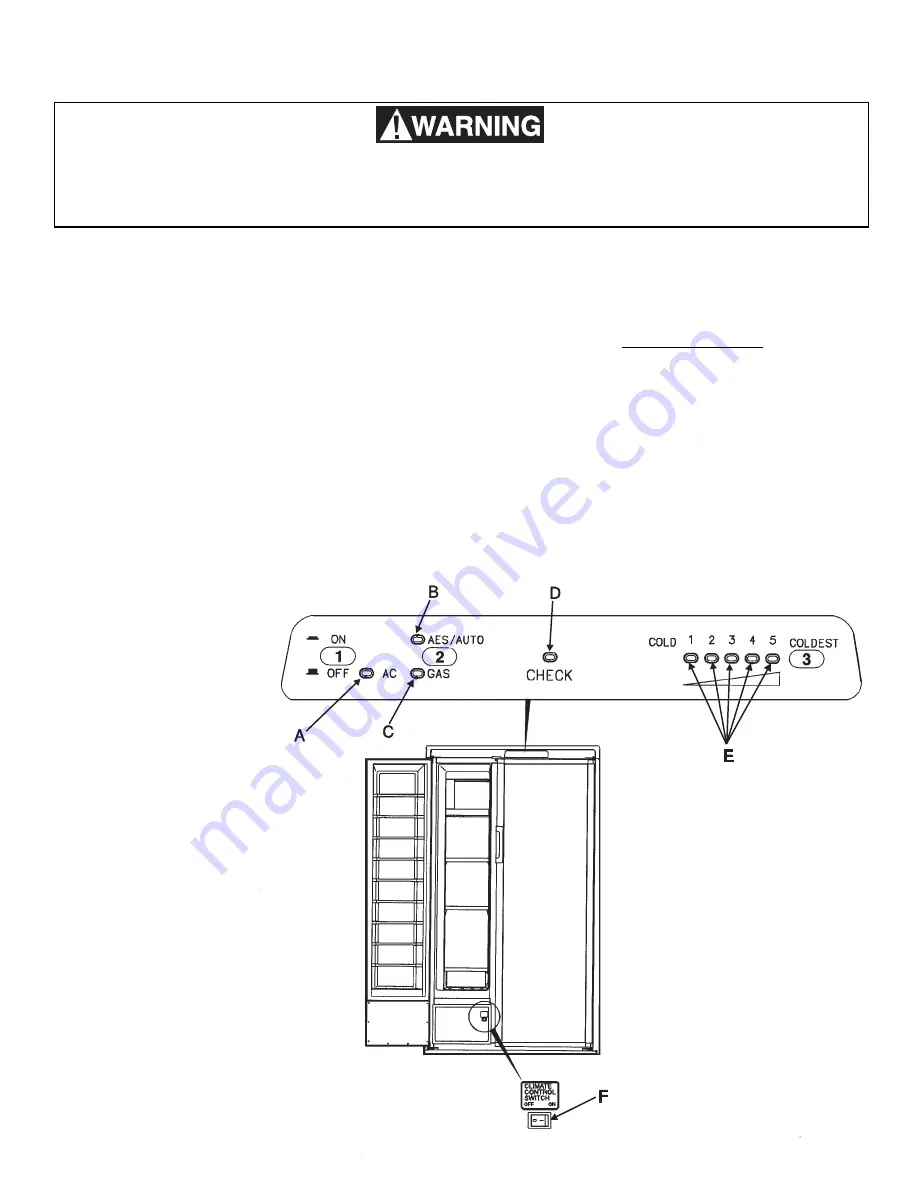
8
SECTION C.
SECTION C.
SECTION C.
SECTION C.
SECTION C. OPERA
OPERA
OPERA
OPERA
OPERATING INSTR
TING INSTR
TING INSTR
TING INSTR
TING INSTRUCTIONS
UCTIONS
UCTIONS
UCTIONS
UCTIONS
1.
1.
1.
1.
1. IMPOR
IMPOR
IMPOR
IMPOR
IMPORT
T
T
T
TANCE OF LEVELING A REFRIGERA
ANCE OF LEVELING A REFRIGERA
ANCE OF LEVELING A REFRIGERA
ANCE OF LEVELING A REFRIGERA
ANCE OF LEVELING A REFRIGERAT
T
T
T
TOR
OR
OR
OR
OR
In an absorption refrigerator system, ammonia is liquefied
in the finned condenser coil at the top of the refrigerator.
The liquid ammonia then flows into the evaporator (inside
the freezer section) and is exposed to a circulating flow of
hydrogen gas, which causes the ammonia to evaporate,
creating a cold condition in the freezer.
The tubing in the evaporator section is specifically sloped
to provide a continuous movement of liquid ammonia
downward by gravity through this section. If the refrigera-
tor is operated when it is not level and the vehicle is not
moving, liquid ammonia will accumulate in sections of the
evaporator tubing. This will slow the circulation of hydro-
gen and ammonia gas, or in severe cases, completely
block it, resulting in a loss of cooling.
Any time the vehicle is parked for several hours with the
refrigerator operating, the vehicle should be leveled to
prevent this loss of cooling. The vehicle needs to be
leveled only so it is comfortable to live in (no noticeable
sloping of floors or walls).
When the vehicle is moving, the leveling is not critical as
the rolling and pitching motion of the vehicle will pass to
either side of level, keeping the liquid ammonia from
accumulating in the evaporator tubing.
Most LP gas appliances used in recreational vehicles are vented to the outside of the vehicle. When parked close
Most LP gas appliances used in recreational vehicles are vented to the outside of the vehicle. When parked close
Most LP gas appliances used in recreational vehicles are vented to the outside of the vehicle. When parked close
Most LP gas appliances used in recreational vehicles are vented to the outside of the vehicle. When parked close
Most LP gas appliances used in recreational vehicles are vented to the outside of the vehicle. When parked close
to a gasoline pump, it is possible that the gasoline fumes could enter this type of appliance and ignite from the
to a gasoline pump, it is possible that the gasoline fumes could enter this type of appliance and ignite from the
to a gasoline pump, it is possible that the gasoline fumes could enter this type of appliance and ignite from the
to a gasoline pump, it is possible that the gasoline fumes could enter this type of appliance and ignite from the
to a gasoline pump, it is possible that the gasoline fumes could enter this type of appliance and ignite from the
burner flame, CAUSING A FIRE OR AN EXPLOSION.
burner flame, CAUSING A FIRE OR AN EXPLOSION.
burner flame, CAUSING A FIRE OR AN EXPLOSION.
burner flame, CAUSING A FIRE OR AN EXPLOSION.
burner flame, CAUSING A FIRE OR AN EXPLOSION.
FOR YOUR SAFETY, when refueling, shut off all LP gas appliances which are vented to the outside.
FOR YOUR SAFETY, when refueling, shut off all LP gas appliances which are vented to the outside.
FOR YOUR SAFETY, when refueling, shut off all LP gas appliances which are vented to the outside.
FOR YOUR SAFETY, when refueling, shut off all LP gas appliances which are vented to the outside.
FOR YOUR SAFETY, when refueling, shut off all LP gas appliances which are vented to the outside.
2. CONTROL PANEL
LEGEND 2-WAY AES MODEL
1. Main Power Button ON/OFF
2. AES/AUTO/GAS Mode Selector Button
3. Temperature Selector Button
A. AC Mode Indicator Lamp
B. AES/AUTO/ Mode Indicator Lamp
C. GAS Mode Indicator Lamp
D. CHECK Indicator Lamp
E. Temperature Indicator Lamps
F. Climate Control Switch
FIG. 15
2-WAY DISPLAY PANEL

